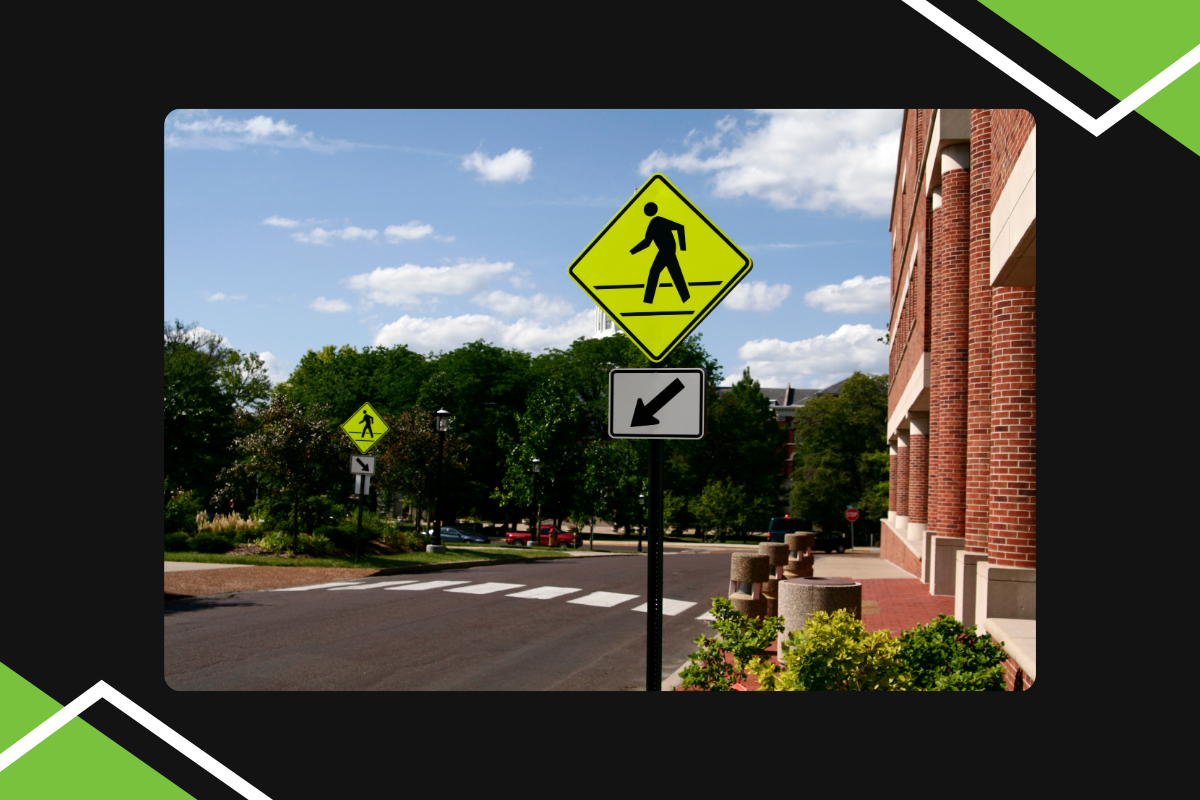If you live in a large city or small town, chances are you will encounter a crosswalk at some point throughout your day, whether you are a passenger or pedestrian.
How do you react when you come in contact with a crosswalk? As a driver, do you stop and look both ways before continuing your journey? As a pedestrian, do you assume you have the right of way and that drivers are paying attention?
We’ve found that many people, particularly in our hometown of Montclair, New Jersey, don’t know the latest crosswalk laws.
Too often, we see drivers speeding through while pedestrians are midway in the crosswalk. In this article, we will look at some current crosswalk rules, laws, and safety tips, along with the financial impacts that violating these terms can have on individuals.
Current Crosswalk Laws in NJ
On April 1, 2010, a New Jersey Law passed requiring drivers to stop for pedestrians in a marked crosswalk. Prior to this law, drivers only had to yield.
This means drivers must come to a complete stop and stay stopped when they reach a marked crosswalk where pedestrians are present. If nobody is nearby, drivers can simply pass through uninterrupted, but they should always observe their surroundings.
If there is not a marked crosswalk, or there are lights that say to stop or cross at an intersection, drivers will have the right of way, and pedestrians should yield to them. Again, it’s important that drivers and pedestrians know the rules, are aware of their surroundings, and work together to keep each other safe.
Impacts for Violators of Crosswalk Rules
For drivers who fail to observe crosswalk laws, they are subject to the following:
- Two points on their license
- A $200 fine + court costs
- Up to 15 days of community service
- Insurance premium surcharge
Pedestrians who do not follow the rules are also subject to tickets and fines. Failure to observe pedestrian signals and use of crosswalks at signalized intersections carries a $54.00 fine.
One positive note is that for each fine enforced and collected, a portion ($100) is deposited into the “Pedestrian Safety, Enforcement and Education Fund,” which was established in 2005.
Insurance Impacts
As your neighborhood insurance agency and trusted advisors, we’d be remiss if we didn’t dive deeper into the impacts on your insurance premiums we mentioned above.
An insurance surcharge is the amount of money that your insurance provider will add to your premium following a particular event such as an accident or violation of crosswalk laws.
This is because you’re now considered more likely to be involved in an incident or cause harm, which increases the risk that your insurance company will have to pay out a claim on your behalf.
This spike in cost can last several years depending on the severity of the violation and the state you are in. In some states, it’s even connected to the number of points you have, of which, in this case, you will have an additional two.
Crosswalk Safety Tips
Drivers and pedestrians share the responsibility of safely navigating crosswalks. As intersections of pedestrian and vehicular paths, crosswalks are critical zones for vigilance to prevent accidents and ensure the safety of all road users.
Here, we will provide crucial safety tips to protect pedestrians, drivers, children, and seniors. Whether you’re walking to work, driving your kids to school, or simply enjoying a stroll in your neighborhood, these guidelines will help you understand the best practices for moving through crosswalks safely and responsibly.
Armed with the right knowledge, we can all contribute to making our streets safer for everyone.
Tips for Drivers
- Watch for pedestrians when making a right on a red
- Keep your windshield clean and free of debris
- Don’t text and drive (ever!)
- Don’t drink and drive (ever!)
- Be on the lookout for bikers, roller skaters, skateboards, scooters and more
Tips for Pedestrians
- Cross at corners and at marked crosswalks (no jaywalking!)
- Look both ways before crossing (Left, right and left again)
- Keep an eye out for turning vehicles
- Walk facing traffic
- Obey traffic signals
- If impaired, use extra caution and walk with others
- Wear reflective attire at night
Tips for Children
- Do not cross between parked cars
- Listen for traffic
- If there is no sidewalk nearby, walk as far off the main road as possible, facing oncoming traffic
Tips for Seniors:
- Make eye contact with drivers before crossing in front of a vehicle
- Use a buddy system and cross with partners or groups
- Avoid crossing in harsh weather conditions
Key Takeaways
Understanding and adhering to crosswalk safety rules is crucial for ensuring the well-being of all road users. Whether you are a driver, pedestrian, cyclist, or any other individual sharing the road, your actions can significantly impact not only your safety but also that of others around you.
By staying informed about local laws, remaining vigilant in traffic, and respecting the rights and presence of all individuals, we can contribute to a safer environment in our communities.
Let us all commit to these practices, not just to avoid legal penalties and financial repercussions but to uphold a shared responsibility for life and safety on our streets. Together, by following these safety tips and encouraging others to do the same, we can work towards reducing accidents and enhancing the quality of life in our neighborhoods.
